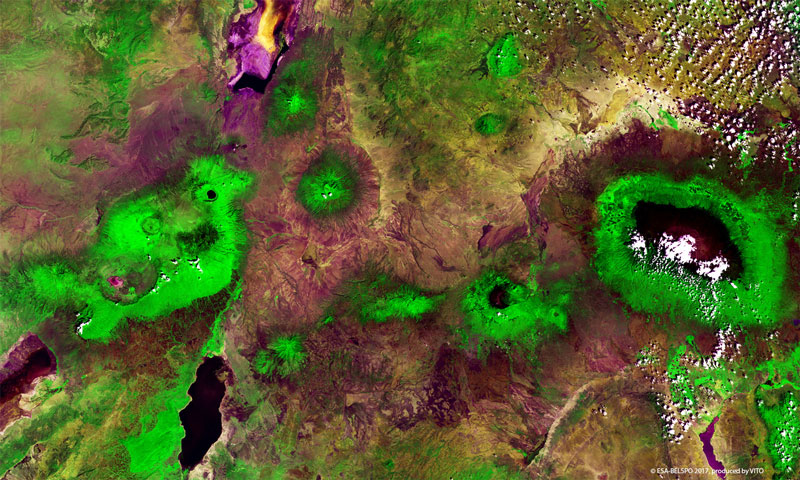- Learn & Discover
- Long-live PROBA-V
Long-live PROBA-V
10 Nov 2021

Launched on 7 May 2013, PROBA-V is a miniaturised ESA satellite tasked with a full-scale mission to map land cover and vegetation growth across the entire planet nearly every day.
This mission extended the data set of the long-established VEGETATION instrument, flown as a secondary payload on board France's SPOT-4 and SPOT-5 satellites, launched in 1998 and 2002 respectively, and serving as a bridge with Copernicus Sentinel-3.

ESA's PROBA-V operational mission ended on 30 June 2020, due to suboptimal illumination for the instruments and the availability of Sentinel-3 data, but continued in an experimental phase from 1 July 2020 until 31 October 2021.
The experimental phase involved a reduced number of acquisition passes per day, while the satellite focused on acquiring 100 m data over Africa and Europe. During this phase, PROBA-V also conducted regular moon sensing to improve ESA's Lunar Irradiance Model (LIME) and to check the radiometric stability of the VEGETATION instrument.
Additionally, yaw manoeuvres were performed in order to test super resolution, which is a method for enhancing the accuracy of imagery by combining lower resolution images the satellite acquires over the same location.
The end of VEGETATION instrument operations is, however, not the end of PROBA-V's life: the other instruments on board are fully functional and will continue to send data to the Redu ground station. In particular, the Energetic Particle Telescope instrument provides near real time and static radiation data products for the SSA Space Weather Service Network. Three years are missing to cover the full solar cycle on the same orbit with the same spectrometer, which could give the scientific community an outstanding, long lasting and high quality radiation data set.

Roberto Biasutti, ESA's Operational Manager for PROBA-V, states, “The challenge for PROBA-V was to continue and improve the Spot Vegetation product with a micro-satellite. Advanced technology and miniaturisation of platform and payload made it possible to achieve this performance with a payload having only 1/3rd of the power, mass and volume compared to SPOT, at a fraction of the cost. This challenge should continue with PV-CC, a 12-unit small satellite, foreseen for 2022, mounting the same camera as PROBA-V.
For more information on PROBA-V, visit the PROBA-V blog.